Dubstep
byDubstep. Great, formidable and popular. None of the modern electronic music genres has such a mixed reputation, which is at times close to hatred. Revived by Internet memes, European hardcore is mostly remembered by the middle-aged men and women who danced to it on world dancefloors in their twenties. Clownstep, which gave a second life to
Among the new listeners of this very fashionable genre, only a few know about British garage, which formed its style. For the majority, dubstep is a monolithic obelisk, alienated from all other genres; an obelisk weaving webs of diverse sounds. In reality, dubstep logically came out of the previous subgenres of UK garage. It all began with the great popularity of American garage house in Europe in the early 90s. Having evolved by the late 90s into a bald and harmless movement with a dominant and awful bass line, speed garage collapsed under the commercial onslaught of similar releases.
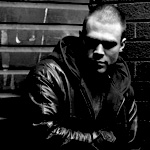
El-B. Half of Groove Chronicles
His homeland is the Southern London area of Croydon. In the Eastern part of the area, there was a vinyl record shop Big Apple Records. The main seller there was one of the future creators of dubstep, Hatcha. Later, he chose Skream, a future super master of the genre, who at that time was just giving good expectations and spent all his time after school in the shop, as his apprentice. Big Apple sold a variety of thematic oldschool music. Excellent records with British hardcore, jungle and drum and bass classics,
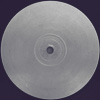
Groove Chronicles — Stone cold 1998
From Stone cold single, Groove Chronicles
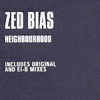
Zed Bias — Neighbourhood (El-B remix) 1999
Vocal MC Rumpus, Nicky Prince
Remixed by Lewis Beadle
From Neighbourhood single, Locked On

Zed Bias
Zed Bias from the old guard of dark garage believes that the attraction of
Groove Chronicles
Black puppets / 1999

Neil Jolliffe & Sarah Lockhart
There was something really interesting under the concrete cover of

Hatcha
Jolliffe and Lockhard knew many dark garage artists personally, so they didn’t have much trouble with organising performances. The first resident of the Forward club night was the 20-year-old Hatcha. He became an example for the first wave of young artists of the future dubstep. Young Benga, Skream, Loefah, Mala and Coki would bring him their first records and Hatcha listened to them and gave advice: on what they should focus on and what he was expecting from them next time. Hatcha became the first host of a radio show about dubstep on an extremely influential pirate radio station Rinse FM in 2001. He's still proud to be the first dubstep DJ, not without too much modesty and

Darqwan — As we enta 2001
From As we enta / Pipe dreams single, Soulja
Ammunition Promotions quickly took what they could: stylish minimalistic posters of the weekly Forward parties, neat text logos, the nice graphic design on releases, and professional photos of the musicians are all due to the designer Stewart Hammersley (Give Up Art) and the photographer Shaun Bloodworth who were Neil’s great friends and who he offered a new job right before he started the labels. Tasty and juicy self-presentation of dubstep musicians went together with ascetic printing—before that, the guys had high positions in one of the food magazines. Thus, the genre began to quickly develop its own space until it could be done by someone else: key labels, key artists, a thematic club party and its own vision of the design of the phenomenon. It only needed a name.
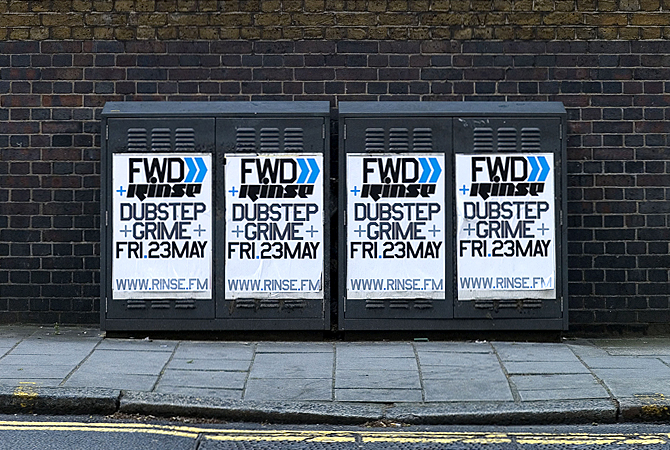
May 2008
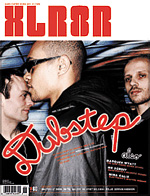
60th issue of the XLR8R magazine, where the term dubstep was thrown to the masses for the first time.
So, the name appeared. In July 2002, the San Francisco magazine XLR8R released the 60th issue with Horsepower Productions, who were still a trio, on the cover, and above them, as if it was handwritten, the diagnosis—dubstep. That was it, it needed nothing more—the image of the subgenre was completed. Previously, dubstep was called either 138 (because of the tempo) or nu dark swing, which included breakbeat garage, that was created a little bit earlier, as well as dubstep, grime sprouts, and much more stuff that couldn’t be clearly defined.
There are lots of discussions on the Internet about who was the first to invent the name of the genre: was it one of the ideologists of dubstep and dark garage in general, Kode9, or one of the founders of Ammunition Promotions, Neil Jolliffe. An important artist of the style, DJ Plastician (former known as Plasticman) argues that it was Neil who was the first to use the word dubstep to define the influence of the Jamaican dub music tradition on dark garage, meaning a reformed
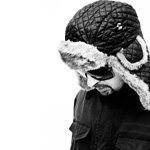
Kode9
Then for about a year, the magic word kept appearing in the promo group press releases until the group made it appear on the cover of an American magazine. In 2002, Kode9 released a dubsteppa mix—they say the name went from there. But even assuming that the story of the name is obscure and it’s not clear which person from the scene came up with it, it is important that the participants of the movement themselves suggested and implemented it. (Not like with speed garage: the term was invented by Todd Edwards who was only indirectly related to the scene while all the rest of it tried to disown amphetamines.)

Elephant Man — Log on (Horsepower Productions remix) 2001
Remixed by Ben Garner, Y. Small
From Log on (Horsepower Productions remixes) single, Greensleeves Records

Dub War — Generation 2001
From Murderous style single, Tempa
The sacred dub came out of Jamaican reggae when it became clear that a version of a song which was recorded without words by mistake was as good at rocking the people on the dancefloor as the version with vocals. Later they started adding different effects like echo or a reverberator; then they decided to cut out the melody from the original, leaving only a few fragments, and most importantly, the creators increased the bass and drums at low frequencies and, as a result, the sound became denser, darker and more complicated altogether. The special effects and the sounds that they created sank in the deep bass line. Dubstep inherited the prevalence of instruments from dub. At first, Jamaican dub was different from reggae precisely because its versions were purged of words, they were just backing tracks. In the 70s, Kingston labels released 7-inch 45s with the vocal version on the
Music & stories
12″ pages on social networks and weekly materials that you can’t find on the website. Cool electronic music videos, tune of the week, histories behind albums and FridayFive tracks. Join!